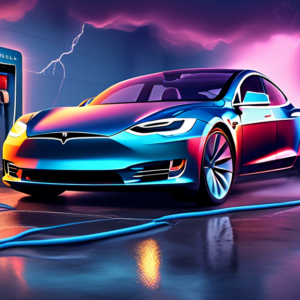The Risky Trend of Extreme Temperature Charging
Tesla owners, known for their ingenuity and eagerness to push boundaries, have explored various methods to optimize their electric vehicle charging experience. One such method, recently gaining traction online, involves wrapping charging cables in wet towels to supposedly combat extreme temperatures. However, this practice, dubbed wet towel charging, has raised serious concerns, with Tesla itself advising against it.
Understanding the Allure of Wet Towel Charging
The logic behind wet towel charging stems from the impact of temperature on battery performance. Extreme heat can accelerate battery degradation, while extreme cold can temporarily reduce range. Proponents of this method believe that the evaporative cooling effect of the wet towel can mitigate these issues, particularly in hot climates or during rapid charging sessions.
Furthermore, some EV owners, particularly those without access to climate-controlled garages, view wet towel charging as a DIY solution for managing battery temperature in challenging environments. The readily available and inexpensive nature of this method adds to its appeal.
Tesla’s Stance: Safety First
Despite the perceived benefits, Tesla has issued a clear warning against wet towel charging. The company emphasizes that this practice poses significant safety risks and could potentially damage both the charging equipment and the vehicle itself.
Dangers of Wet Towel Charging: A Closer Look
Electrical Hazards
Water and electricity are a dangerous combination. Wet towels draped over charging cables create a serious electrocution risk for both the user and bystanders. The potential for short circuits, ground faults, and electrical shocks is significantly elevated, putting lives at risk.
Fire Hazards
The combination of electrical faults and flammable materials is a recipe for disaster. A short circuit caused by wet towel charging could ignite the towel itself or other nearby combustibles, leading to a potentially catastrophic fire.
Corrosion and Damage
Repeated exposure to moisture can corrode electrical contacts and damage charging components. This corrosion can lead to charging malfunctions, reduced charging efficiency, and costly repairs.
Voiding the Warranty
It’s crucial to understand that using unauthorized charging methods, such as wet towel charging, can void your Tesla’s warranty. Tesla’s warranty is designed to cover defects in materials and workmanship, not damage caused by user negligence or improper use.
Tesla’s Recommendations for Optimal Charging
Tesla understands the importance of battery management and provides EV owners with safe and effective ways to optimize charging, especially in extreme temperatures.
Scheduled Charging
Tesla vehicles allow you to schedule charging times through the touchscreen interface. Take advantage of this feature to charge during off-peak hours when electricity rates may be lower and temperatures are typically cooler.
Preconditioning
Tesla’s preconditioning feature is your ally in extreme weather. Activate this feature while your car is still plugged in to warm up or cool down the battery to an optimal temperature range before you drive.
Monitoring Battery Temperature
Keep an eye on your vehicle’s battery temperature gauge on the touchscreen display. If the battery is too hot or too cold, adjust your charging habits accordingly, such as charging for shorter durations or avoiding rapid charging in extreme heat.
Best Practices for EV Charging Safety
Whether you’re a seasoned Tesla owner or new to the world of electric vehicles, prioritizing charging safety is paramount.
Use Tesla-Approved Equipment
Always use Tesla-provided or Tesla-approved charging equipment. This ensures compatibility and minimizes the risk of electrical hazards.
Inspect Charging Cables Regularly
Before each charging session, inspect your charging cables for any signs of damage, such as cuts, fraying, or exposed wires. If you notice any damage, discontinue use immediately and contact Tesla for a replacement.
Charge in Well-Ventilated Areas
Ensure the charging area is well-ventilated to prevent the buildup of heat. Avoid charging in enclosed spaces, especially during hot weather, as this can increase the risk of overheating.
Be Mindful of Surroundings
Maintain a safe distance between your charging vehicle and flammable materials. Never leave your car unattended while charging, and always have a fire extinguisher readily accessible.
Embrace Official Guidance
The allure of quick fixes can be tempting, but when it comes to EV charging, safety should always be the top priority. Instead of resorting to unverified methods like wet towel charging, trust Tesla’s official guidance and recommendations to ensure the longevity of your vehicle and, most importantly, your safety. By embracing best practices and utilizing Tesla’s built-in features, you can enjoy the many benefits of electric vehicle ownership with peace of mind.
